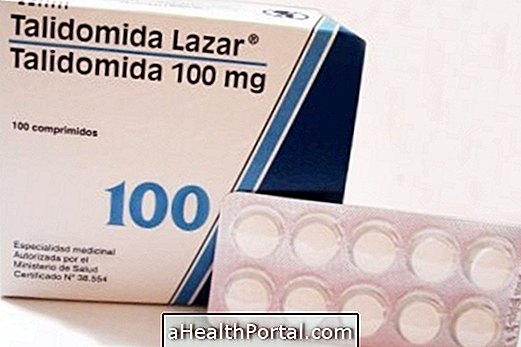The xeroderma pigmentosum is a rare and inherited genetic disease characterized by hypersensitivity of the skin to the UV rays of the sun, resulting in dry skin and the presence of numerous freckles and white spots scattered throughout the body, especially in the areas of greatest sun exposure, including the lips.
Due to the great sensitivity of the skin, people diagnosed with xeroderma pigmentosum are more likely to develop pre-malignant lesions or skin cancer, and it is important to use sunscreen daily above 50 SPF and appropriate clothing. This genetic disease does not have a definitive cure, but treatment can prevent the onset of complications, and must be followed for a lifetime.

Symptoms of xeroderma pigmentosum
The signs and symptoms of xeroderma pigmentosum and the severity can vary according to the affected gene and the type of mutation. The main symptoms related to this disease are:
- Many freckles on the face and all over the body, become even darker when exposed to the sun;
- Severe burns after a few minutes of sun exposure;
- Blisters appear on the skin exposed to the sun;
- Dark or light spots on the skin;
- Formation of crusts on the skin;
- Dry skin with the appearance of scales;
- Hypersensitivity in the eyes.
The signs and symptoms of xeroderma pigmentosum usually appear during childhood until the age of 10. It is important that the dermatologist is consulted as soon as the first signs and symptoms appear so that the treatment can start immediately afterwards, because after 10 years it is common for the person to start developing signs and symptoms related to skin cancer, which makes treatment more complicated. Learn how to identify the symptoms of skin cancer.
Main cause
The main cause of xeroderma pigmentosum is the presence of a mutation in genes responsible for DNA repair after exposure to ultraviolet radiation. Thus, as a consequence of this mutation, DNA cannot be repaired correctly, resulting in changes in skin sensitivity and leading to the development of the signs and symptoms of the disease.
How the treatment is done
The treatment for xeroderma pigmentosum should be guided by the dermatologist according to the type of lesion presented by the person. In the case of pre-malignant lesions, the doctor may recommend topical treatment, oral vitamin D replacement and some measures to prevent the progression of the lesions, such as the use of sunscreen daily and the use of clothes with sleeves long and long pants, use of sunglasses with UV protection factor, for example.
However, in the case of lesions with malignant characteristics, possibly indicative of skin cancer, it may be necessary to perform surgery to remove the lesions that appear over time, in addition to performing specific treatment, which may also involve chemotherapy and / or radiation therapy after surgery. Understand how the treatment for skin cancer is done.
Was this information helpful?
Yes No
Your opinion is important! Write here how we can improve our text:
Any questions? Click here to be answered.
Email in which you want to receive a reply:
Check the confirmation email we sent you.
Your name:
Reason for visit:
--- Choose your reason --- DiseaseLive betterHelp another personGain knowledge
Are you a health professional?
NoMedicalPharmaceuticalsNurseNutritionistBiomedicalPhysiotherapistBeauticianOther
Bibliography
- BRAZILIAN SOCIETY OF DERMATOLOGY. Xeroderma pigmentosum. Available in: . Accessed on 21 Dec 2020
- MOREIRA, Danilo José S .; FONSECA, Juliana B .; ROSSI, Karoline; VASCONCELOS, Suzana S. et al. General aspects of xeroderma pigmentosum: a review. Multidisciplinary Scientific Journal of the Knowledge Center. Vol 11. 3 ed; 114-126, 2020
- SEITENFUS, Jean L. Case report: Xeroderma Pigmentosum. Rev. Bras. Clinical Oncology. Vol 4. 11 ed; 23-24, 2007























